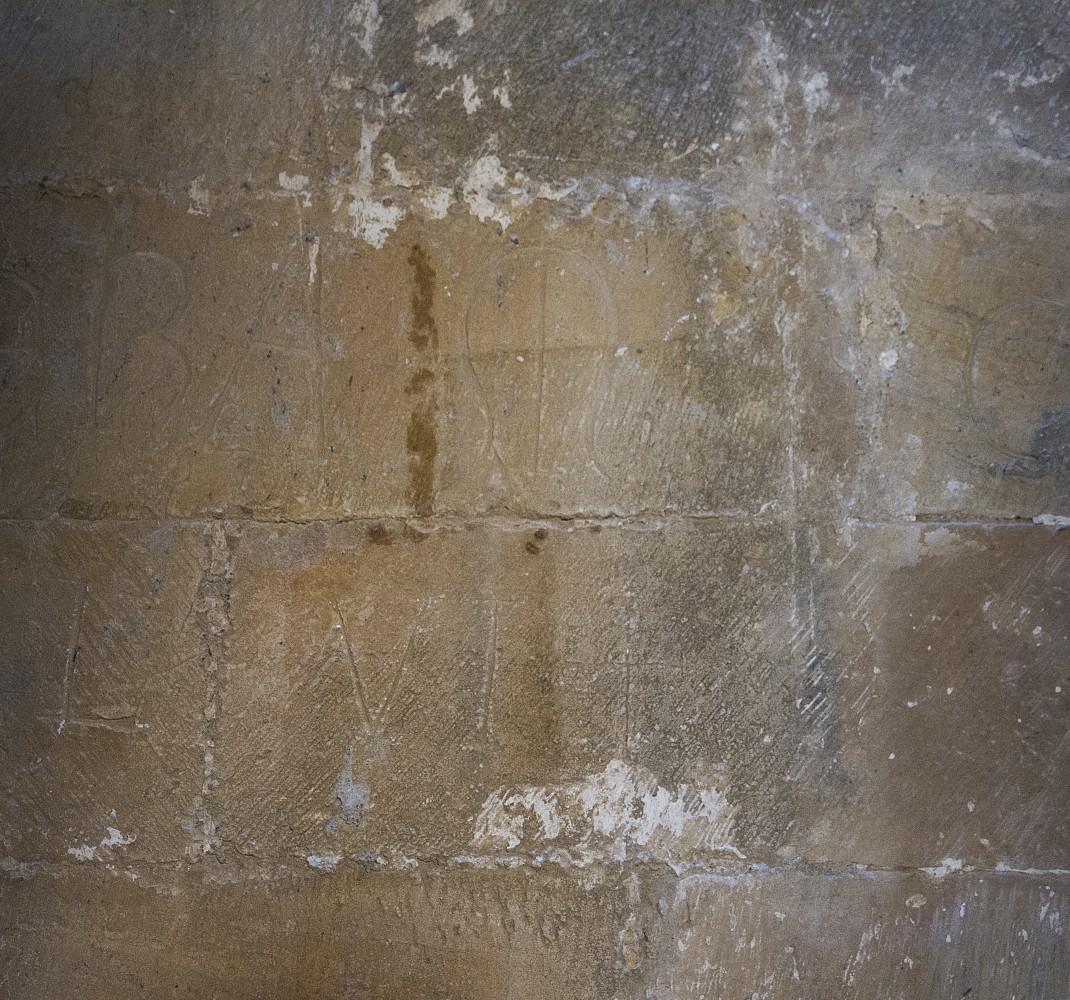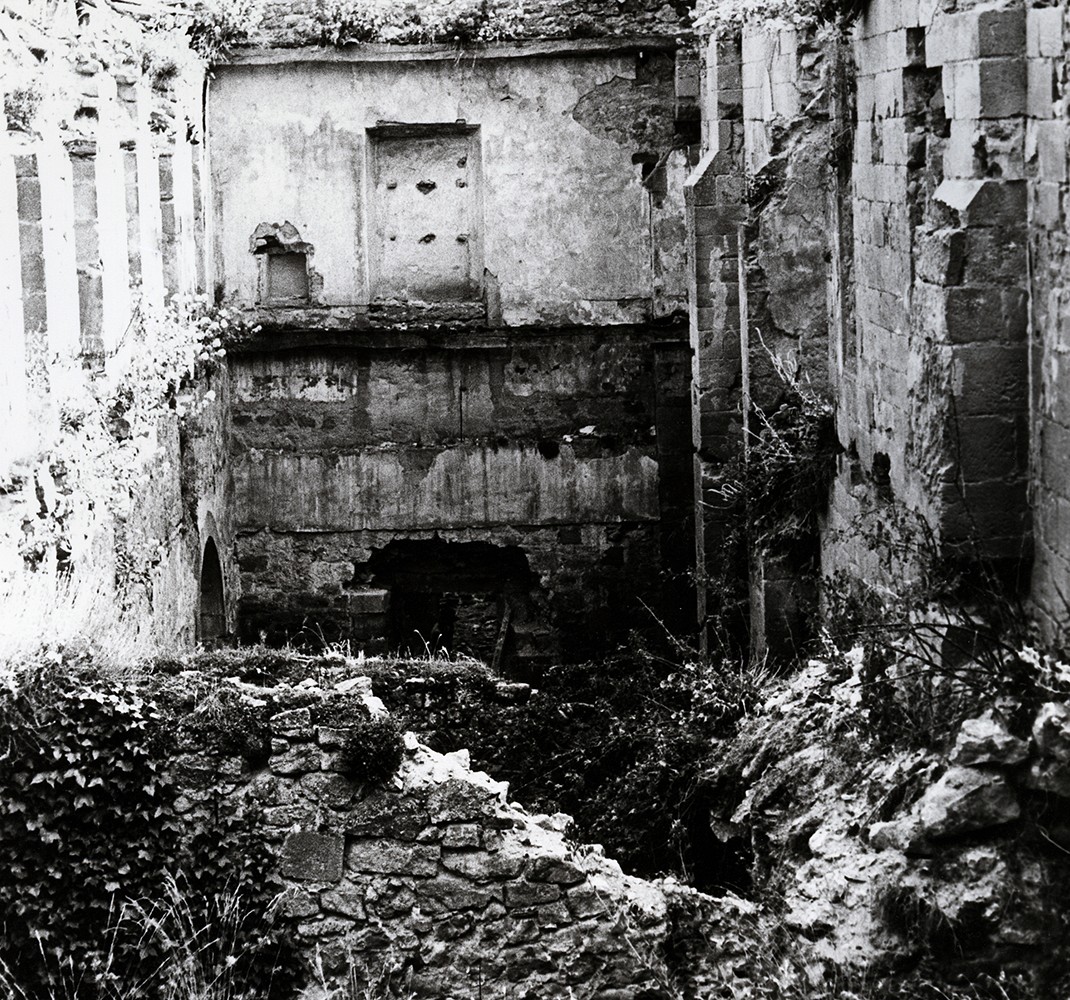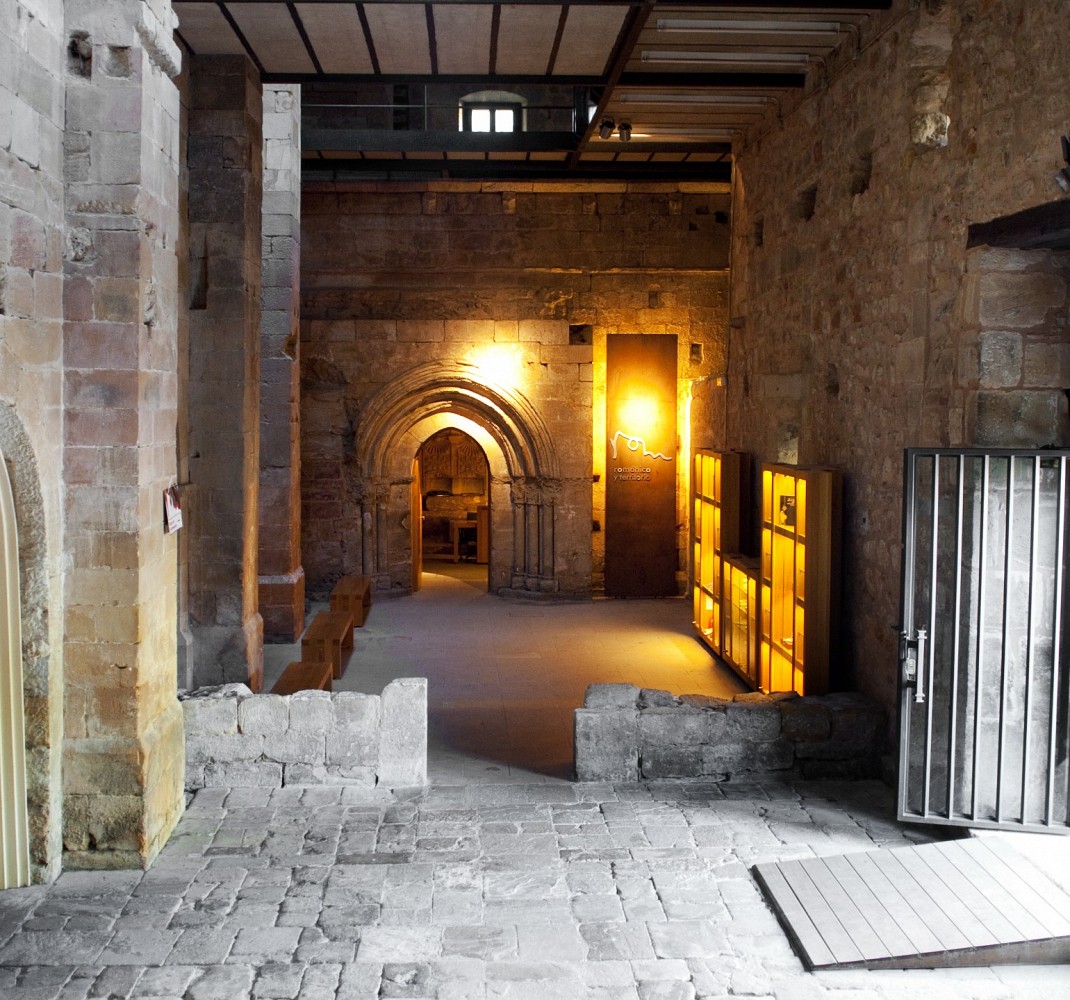Inscription on the medieval facade
Transitional Romanesque.
1218.
Location:
Medieval facade.
In one of the buttresses located on the outer wall of what was once the exterior of the medieval monastery, we find an inscription in which ERA MCCLVI (1256) can be read. To the dates that appear with the expressions era or sub era, which indicate a reference to the Hispanic Era, 38 years must be subtracted to obtain the corresponding dates of the Christian era o current years. We do not know exactly the origin of the election of 38 BC. for the beginning of the Hispanic Era. There are several interpretations that indicate that it originates at the end of the Roman conquest of the Iberian Peninsula, when the Hispanics adopted the Roman calendar. A more recent interpretation, based on the previous idea, relates it to the declaration of Hispania as a tributary province, establishing the payment to the empire of an annual tax called Aera Hispánica. In the 6th century the Visigoths established it as an official chronology that survived until the end of the Middle Ages.
The inscription indicates the date of 1218, at which time we suppose the construction of the medieval monastery was completed. The epigraph remained inside the building after the enlargement carried out by Miguel de Hinojosa in the 18th century, at which time the construction effort led the community to build the two wings that frame the access to the monastery from its eastern part. These spaces were essentially dedicated to individual cells in the upper part and administrative units, offices and warehouses, in the lower part. Today they house the classrooms of the High School.





